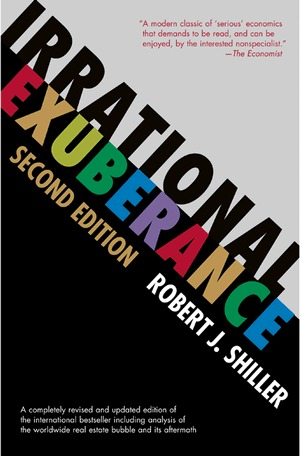
2021 has been a great year for our #BASON predictions @OraclumIS
Why?
Because in 2021, over a period of 22 weeks, we have made stunningly accurate predictions of the #markets, and made a whopping 107% return from these predictions!
A quick thread 🧵on how we did this 👇
Why?
Because in 2021, over a period of 22 weeks, we have made stunningly accurate predictions of the #markets, and made a whopping 107% return from these predictions!
A quick thread 🧵on how we did this 👇

1/ First, how does #BASON work?
We ask people where they & their friends think the markets will end up at the end of each week, while applying network analysis to control for their groupthink bias.
Here’s a video explaining it:
We ask people where they & their friends think the markets will end up at the end of each week, while applying network analysis to control for their groupthink bias.
Here’s a video explaining it:
2/ We’ve been running the whole thing as a survey competition where we asked stock market enthusiasts to give their predictions on the weekly movements of Dow, S&P500, BTC, WTI oil price, and the 10Y yield + 4 stocks: $AAPL , $TSLA , $GME , $AMC 





3/ Competition was open 24h each week; people made predictions on Tue for the Fri close.
We sent out predictions each Wed morning to competition participants, and published them online for everyone to see on Thu afternoon.
This way you could track our precision each week.
We sent out predictions each Wed morning to competition participants, and published them online for everyone to see on Thu afternoon.
This way you could track our precision each week.

4/ More importantly, we had our own #SkinInthegame - we invested $$$ each week on our S&P predictions using two strategies:
First, an $SPY iron condor where our prediction confidence intervals are the upper and lower boundaries of the condor range …
First, an $SPY iron condor where our prediction confidence intervals are the upper and lower boundaries of the condor range …

5/
… and second, $SPY call options to act as a hedge if $SPY breaks the upper (lower) boundary.
The downward hedge was a simple stop-limit order that either reduces losses or preserves profits (like it did last week).
… and second, $SPY call options to act as a hedge if $SPY breaks the upper (lower) boundary.
The downward hedge was a simple stop-limit order that either reduces losses or preserves profits (like it did last week).
6/ How’d we do?
Our portfolio went up from $10,000 to $20,658, earning a 107% return.
A passive investment in the S&P during the same period would have produced a mere 10% return.
High risk – high reward? Not really.
Our portfolio went up from $10,000 to $20,658, earning a 107% return.
A passive investment in the S&P during the same period would have produced a mere 10% return.
High risk – high reward? Not really.

7/ We were careful to hedge against all risk exposure
E.g. of the $10,000 portfolio, we only used a max 20% exposure to buy options based on our predictions
Each week we would spend ≈$1000 on 2 $SPY calls, and would be exposed to ≈$600 loss if the iron condor broke its range
E.g. of the $10,000 portfolio, we only used a max 20% exposure to buy options based on our predictions
Each week we would spend ≈$1000 on 2 $SPY calls, and would be exposed to ≈$600 loss if the iron condor broke its range
8/ Our max loss was around $1600.
In reality, about half that with stop-limit orders.
We were therefore hedged from both an 🔼shock and a 🔻shock.
Our upward hedge made sure we made money during higher volatility, and our downward hedge made sure we limited our losses.
In reality, about half that with stop-limit orders.
We were therefore hedged from both an 🔼shock and a 🔻shock.
Our upward hedge made sure we made money during higher volatility, and our downward hedge made sure we limited our losses.
9/ To this we've added $AAPL in the last two weeks, further boosting our profitability.
Interestingly, $AAPL's prediction went against us in the last week, but given that it shot up two days before, our stop-limit made sure we took profits when it started going down on Fri.
Interestingly, $AAPL's prediction went against us in the last week, but given that it shot up two days before, our stop-limit made sure we took profits when it started going down on Fri.

10/ Why not expose ourselves even more?
Because that would increase the risk.
We opted for a limited risk exposure strategy, with a goal of always preserving the initial $10,000, even when the portfolio grew to over $15,000.
Because that would increase the risk.
We opted for a limited risk exposure strategy, with a goal of always preserving the initial $10,000, even when the portfolio grew to over $15,000.
11/ What about #correlation with the market?
You don’t want high correlation (close to 1), that means the results were mostly due to good luck – markets went up most of the time, so did we.
You don’t want negative given that, well, markets went up most of the time 😊
You don’t want high correlation (close to 1), that means the results were mostly due to good luck – markets went up most of the time, so did we.
You don’t want negative given that, well, markets went up most of the time 😊
12/ We got a very decent 0.57 correlation btw #BASON returns (y-axis) and S&P weekly returns (x-axis)
In most weeks, S&P went up, we predicted it would go up – made money.
3x it went down, we predicted up, we both lost money (lower left quadrant)
In most weeks, S&P went up, we predicted it would go up – made money.
3x it went down, we predicted up, we both lost money (lower left quadrant)

13/ But over 6 weeks, markets went down, we predicted they’d go down, or had the #BASON really close to the final value – so we made money.
This is ideal - markets losing money, but the BASON still being able to profit.
That is exactly the scenario we’re most excited about! 🤩
This is ideal - markets losing money, but the BASON still being able to profit.
That is exactly the scenario we’re most excited about! 🤩
14/ So, even with a strongly hedged strategy, limited risk exposure, and 0.57 market correlation, we managed to deliver a 107% return.
Is this called “beating the market” then?
No, not yet.
Anyone can outperform the market during a short window.
Is this called “beating the market” then?
No, not yet.
Anyone can outperform the market during a short window.
15/ What matters is how this will hold up over a longer time horizon.
This is why we will carry on with the competition during the entire 2022, keep gathering data and adding to the consistency in #BASON’s predictions.
And most importantly, keep having that skin in the game.
This is why we will carry on with the competition during the entire 2022, keep gathering data and adding to the consistency in #BASON’s predictions.
And most importantly, keep having that skin in the game.
16/ Thanks for reading!
We’re running a newsletter where we remind you of the competition each week (awarded $1500 to two winners last time).
Sign up, help us predict markets, and maybe even earn some money!
oraclum.substack.com
We’re running a newsletter where we remind you of the competition each week (awarded $1500 to two winners last time).
Sign up, help us predict markets, and maybe even earn some money!
oraclum.substack.com
• • •
Missing some Tweet in this thread? You can try to
force a refresh













